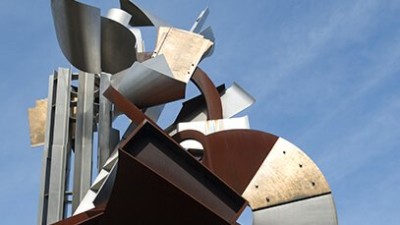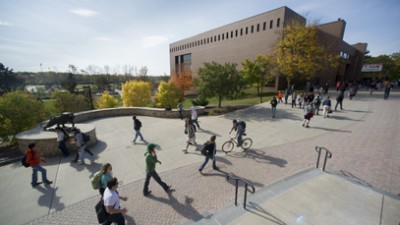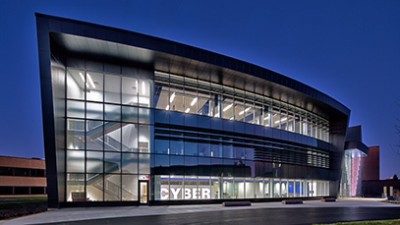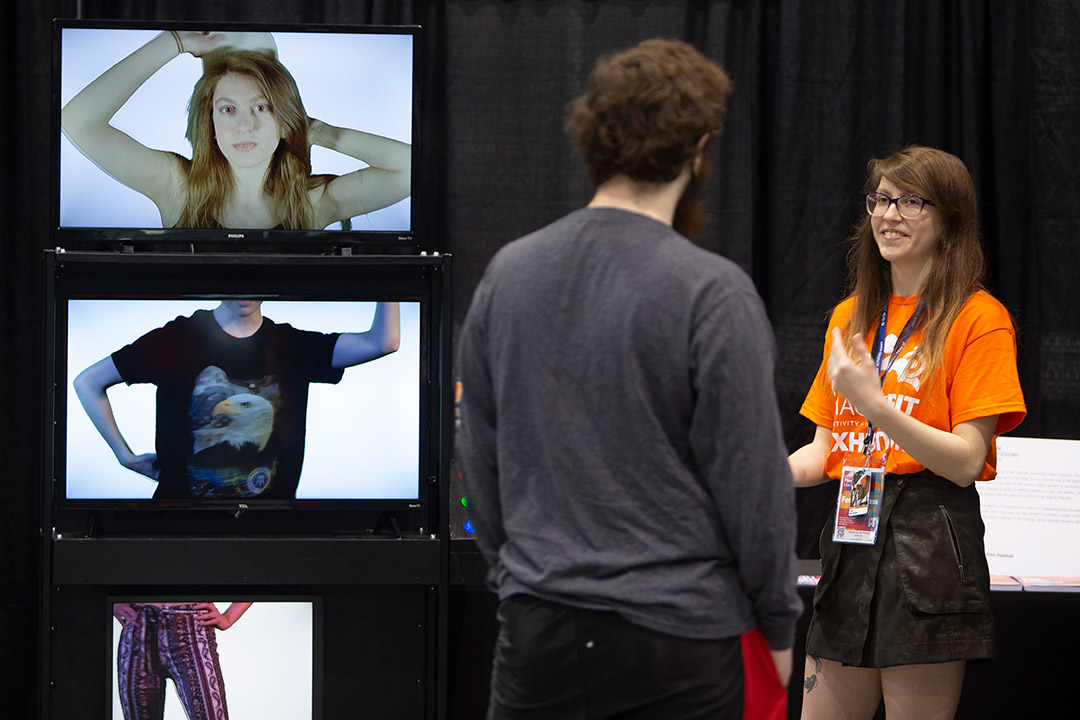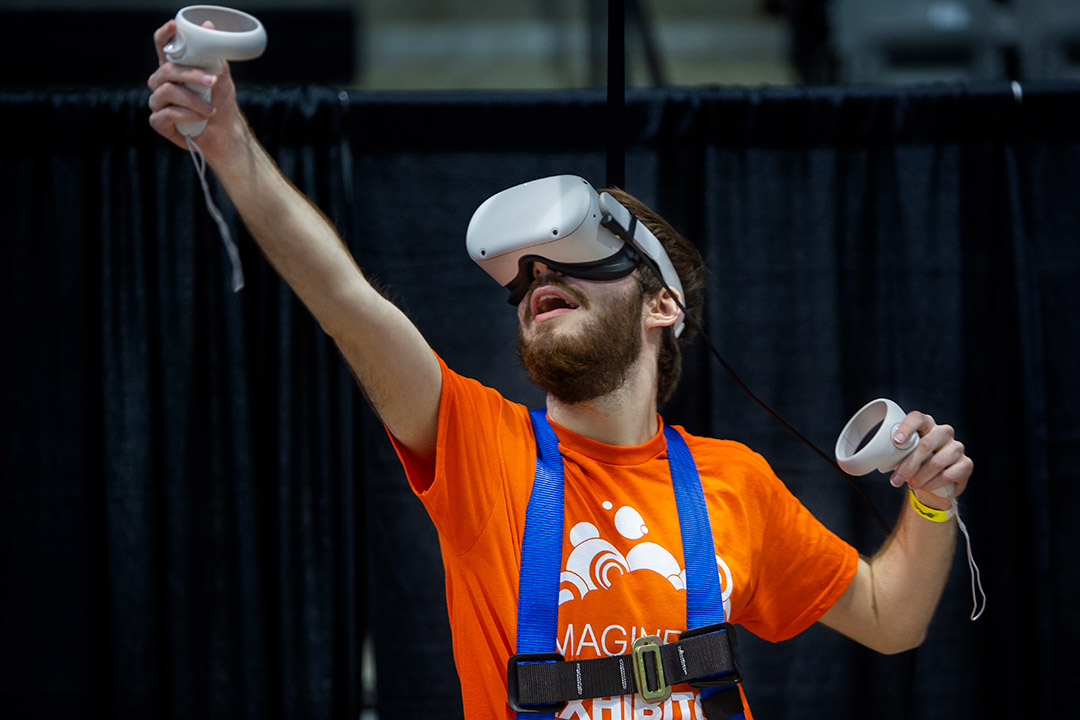Three student teams push the boundaries to improve society in new competition
Carlos Ortiz
Fourth-year film production major Alexandra McDonald explains “Amalgamate,” her interactive video installation, at the Gene Polisseni Center.
Three student teams showed what technology, the arts, and design (TAD) means at RIT. They designed technology to help astronauts keep physically fit in space, incorporated virtual reality to enhance signing and captioning support for the Deaf, and built a modern sculpture of the human body made of computers.
Carlos Ortiz
In the Gamification and Performance-based Monitoring of Sensorimotor Training Activities project, astronauts can play as they train for living in space.
The TAD challenge, the first competition to focus on how the three distinct disciplines are being integrated at the university, was held as part of the 2022 Imagine RIT: Creativity and Innovation Festival. Winners were selected from 22 projects in three categories: storytelling through enhanced realities; solving humanities problems; and pushing the boundaries of visual communications and imaging. Each category winner received $5,000.
In the Gamification and Performance-based Monitoring of Sensorimotor Training Activities project, astronauts can play as they train for living in space. The project team built the system on gaming, virtual reality, and exercise science, using real-time visual biofeedback to assess physical health.
The team of NTID students and faculty that took first place for Experience and Performance Enhancing Language Access for Healthcare enhanced smart glasses that can allow the field of vision to expand.
Discover Imagine RIT
After going virtual for 2021, thousands of people came to the Rochester Institute of Technology campus on Saturday for an in-person Imagine RIT: Creativity and Innovation Festival, which featured more than 250 exhibits throughout the campus from more than 1,800 students and faculty. Read more.
“This is like virtual or augmented reality glasses with a captioning function,” said Sophie Williams, one of the team leaders. She gave an example of users in a lab setting. They can look down at an experiment and with the glasses “see” captioning.
Amalgamate! An Interactive Video Installation designed by Alexandra McDonald, a fourth-year film production student from Seekonk, Ma., and Johnny Gates, a third-year film production student from Rochester, N.Y., was a modern sculpture of the human body.
The three large computer screens showed the 30 or 40 different videos of McDonald’s head, torso, and legs. Participants were offered a chance to interact with the screens. “There were many odds of getting a different version of me,” McDonald said.
Both students in the College of Art and Design worked with software engineers from the Golisano College of Computing and Information Sciences. For McDonald, this began as a personal project, and a way of identification and self-expression. Some of the moving images were of her dance and gymnastic moves.
The design projects are a reflection of the intersection of technology, the arts, and design, and focused on effectively using technology to improve lives, said RIT Provost Ellen Granberg.
“RIT leverages the power of technology for the greater good,” she said.
Bob Finnerty
The three teams that won the first TAD Competition at Imagine RIT: Innovation and Creativity Festival featured unique projects. Each winning team was awarded $5,000.
